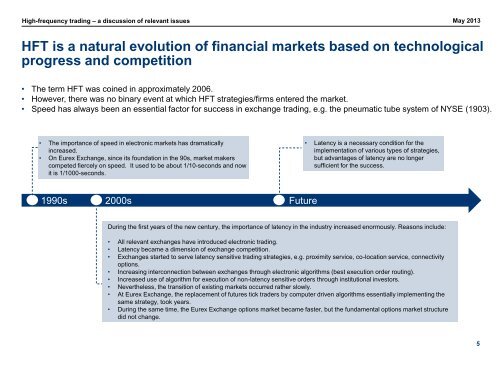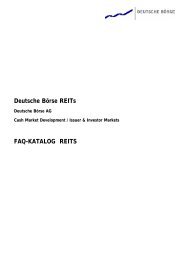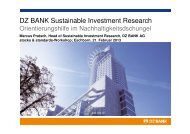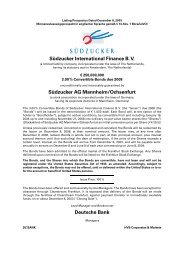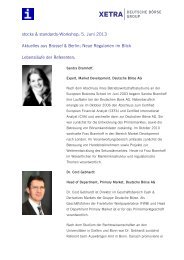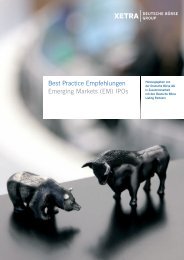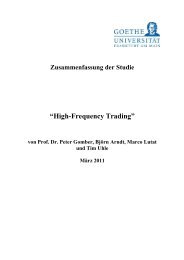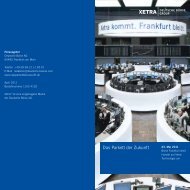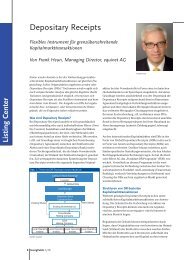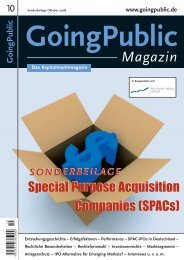High-frequency trading – a discussion of relevant issues - Xetra
High-frequency trading – a discussion of relevant issues - Xetra
High-frequency trading – a discussion of relevant issues - Xetra
- No tags were found...
You also want an ePaper? Increase the reach of your titles
YUMPU automatically turns print PDFs into web optimized ePapers that Google loves.
<strong>High</strong>-<strong>frequency</strong> <strong>trading</strong> <strong>–</strong> a <strong>discussion</strong> <strong>of</strong> <strong>relevant</strong> <strong>issues</strong> May 2013HFT is a natural evolution <strong>of</strong> financial markets based on technologicalprogress and competition• The term HFT was coined in approximately 2006.• However, there was no binary event at which HFT strategies/firms entered the market.• Speed has always been an essential factor for success in exchange <strong>trading</strong>, e.g. the pneumatic tube system <strong>of</strong> NYSE (1903).• The importance <strong>of</strong> speed in electronic markets has dramaticallyincreased.• On Eurex Exchange, since its foundation in the 90s, market makerscompeted fiercely on speed. It used to be about 1/10-seconds and nowit is 1/1000-seconds.• Latency is a necessary condition for theimplementation <strong>of</strong> various types <strong>of</strong> strategies,but advantages <strong>of</strong> latency are no longersufficient for the success.1990s 2000s FutureDuring the first years <strong>of</strong> the new century, the importance <strong>of</strong> latency in the industry increased enormously. Reasons include:• All <strong>relevant</strong> exchanges have introduced electronic <strong>trading</strong>.• Latency became a dimension <strong>of</strong> exchange competition.• Exchanges started to serve latency sensitive <strong>trading</strong> strategies, e.g. proximity service, co-location service, connectivityoptions.• Increasing interconnection between exchanges through electronic algorithms (best execution order routing).• Increased use <strong>of</strong> algorithm for execution <strong>of</strong> non-latency sensitive orders through institutional investors.• Nevertheless, the transition <strong>of</strong> existing markets occurred rather slowly.• At Eurex Exchange, the replacement <strong>of</strong> futures tick traders by computer driven algorithms essentially implementing thesame strategy, took years.• During the same time, the Eurex Exchange options market became faster, but the fundamental options market structuredid not change.5


